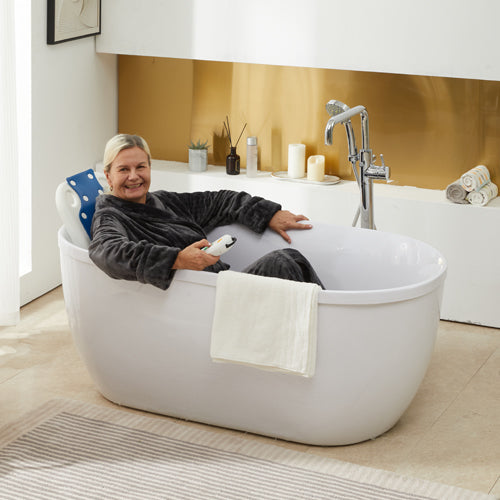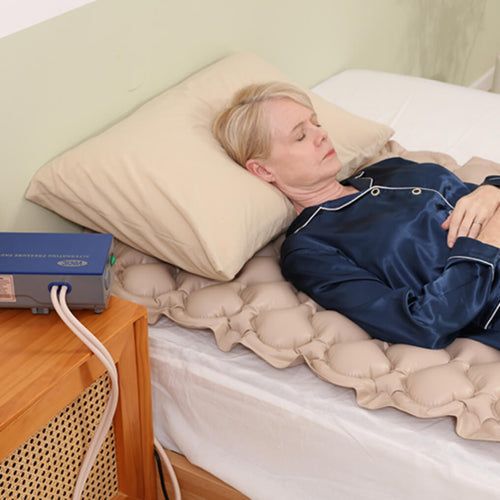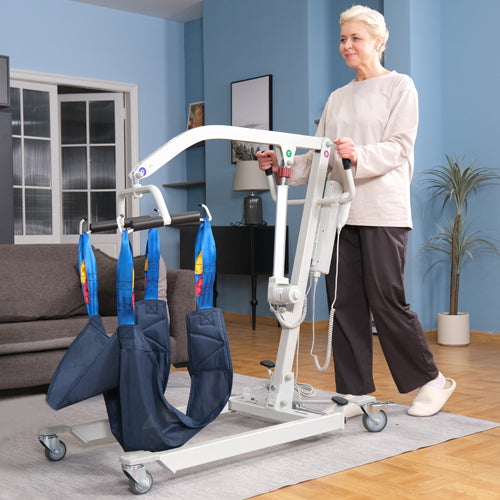Studies show that a rollator walker can help people with chronic obstructive pulmonary disease (COPD) walk outdoors for longer periods more easily. However, not all pulmonary patients will benefit from using one. Doctors recommend considering the patient's needs, daily usage, and comfort level when selecting a rollator walker.
Pulmonary patients face limitations in their daily activities, such as shortness of breath, fatigue, and difficulty walking for extended periods. Those with COPD often use oxygen tanks or inhaled medications to open their airways, but the disease is incurable. Their daily mobility is often restricted.
While COPD cannot be cured, the good news is that you can minimize its impact on your life by making changes to your diet and exercise routine. Dietary adjustments, such as adopting a ketogenic diet, quitting smoking and drinking, and engaging in appropriate exercise as recommended by your doctor, can all help manage the condition.

What is a Rollator Walker?
If you find yourself short of breath when going to the store or taking a walk, you might need a foldable rollator walker with a seat. This type of mobility aid typically features a sturdy frame with four wheels, handlebars, and a built-in seat. It is usually foldable, lightweight, and equipped with a seat. People can push it in front of them while walking. Rollators can also have baskets installed for carrying personal items.
7 Benefits of a Rollator Walker with a Seat for COPD Disease Patients
1. Suitable for Indoor Use
A rollator walker with a seat can significantly improve the daily lives of COPD patients. Due to their compromised respiratory systems and insufficient oxygen supply, daily activities can be exhausting. Choosing a rollator walker with a seat can assist you in everyday tasks such as simple housework, cooking, moving around, entertaining guests, taking medication, and using equipment.
2. Provides a Resting Seat for Outdoor Activities
For outdoor activities like picking up prescriptions, walking, shopping, and other outings, this type of walker offers a built-in seat for resting when you feel fatigued. It is also easy to fold and place in your trunk for longer trips.
3. Extend Your Walking Distance
The rollator walker provides stable support, which helps COPD patients maintain balance and reduce physical strain while walking, thereby reducing fatigue. When feeling tired or short of breath, patients can sit down and rest, which prevents overexertion and allows for increased walking time and distance.
4. Easy to Carry and Store
Patients with severe COPD symptoms may experience increased breathlessness, fatigue, coughing, increased mucus production, leg swelling, difficulty taking deep breaths, and shortness of breath during basic tasks. You may need to carry medications and an oxygen tank at all times. rollator walkers often come with storage compartments to hold these essentials, making it convenient to carry what you need.
5. Enhances Overall Mobility and Independence
Using a rollator walker with a seat can enhance overall mobility and independence for lung disease patients. It allows for greater participation in daily activities, promotes physical activity, and helps maintain a sense of independence and control over one’s lifestyle.
6. Beneficial for Physical Health and Rehabilitation
According to research by the NIH on regular walking and pulmonary rehabilitation, participating in regular exercise, such as walking, after completing pulmonary rehabilitation can slow the decline in overall health-related quality of life and walking self-efficacy, and reduce the progression of breathlessness during daily activities. Using a rollator walker with a seat can provide more support for your muscles during exercise, making it easier to stay active.
7. Improves Psychological Well-being
Increased outdoor activities and social interactions can help improve mood, reduce feelings of loneliness, and alleviate symptoms of depression. Using a rollator walker allows patients to confidently engage in social activities, which enhances their sense of self-worth and overall life satisfaction.
What is the Best Rollator Walker with a Seat for COPD from VOCIC
Z21 Ergonomic Foldable 4-Wheel Rollator Walker
This is VOCIC's ultra-cost-effective rollator walker with a seat. Recently upgraded with several new features, including an armrest-embracing backrest and an ergonomic contoured seat, which enhanced comfort and safety. It supports the heaviest weight capacity among current rollator walkers, up to 300 lbs.

- Weight 19.36 lbs
- With a weight capacity of 300 lbs
- Outdoor and indoor use
- All terrain walker, suitable for grass, gravel, marble, wood and so on
- Foldable
- High stability
Z51 Shift Combo 2 In 1 Rollator - Transport Chair Walker
This rollator walker with a seat can also function as a transport chair, which means you can be pushed by someone else if needed. Made from lightweight aluminum, the lightest weight walker can support up to 300 pounds and features adjustable handlebars, a padded seat, and a flip-up backrest that can also double as a rollator.

- Weight 22.9 lbs
- It also features large, durable wheels for indoor and outdoor use
- Comes with practical accessories like a cup holder and cane holder
- Foldable
- Two models: rollator walker and transport chair
Conclusion
Patients with ALS can alleviate symptoms by adjusting their diet and engaging in appropriate exercise. Dietary adjustments, such as adopting a ketogenic diet, or using a rollator walker to assist with mobility, can be beneficial in managing the condition.









